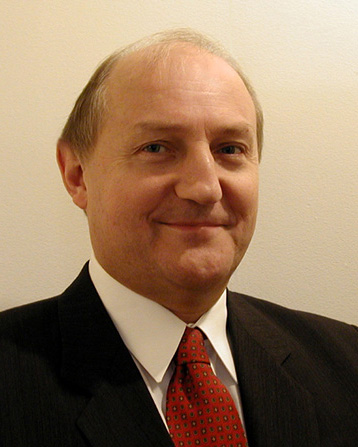Malcolm Hamer MA, MBA, CEng, MIET
 |
Malcolm Hamer was born and educated in the UK, receiving a first degree from Oxford and then working in the UK for the first part of his career. He subsequently worked on assignments in Sweden, New York (where he received an MBA from New York University), Hong Kong, and Singapore, returning in 1997 to New York (where he now resides). His various positions have been in the fields of telecommunications (British Telecom and Ericsson), financial services (Citibank and Instinet), and education (the Open University). He became an IT consultant in 2001, and has worked for clients in a wide range of industries, including telecommunications, financial services, pharmaceuticals, construction, hospitality, retail, and education. |
His positions at British Telecom and Ericsson were in the development of voice and data switching systems, particularly in the areas of software architecture and telephone signalling systems. At British Telecom he worked on the development of System X, the UK's first software-based telephone system. At Ericsson he worked on the customization of Ericsson's switching systems for the UK market, leading to these becoming a second solution (known as System Y) for one-third of BT's network.
At the Open University he was a member of the team that developed the first version of the third-level Telecommunications Systems course (T321) which, with subsequent revisions, has been taken by tens of thousands of students. He was responsible for creating printed course materials, radio programmes, TV programmes, examinations, and co-authoring the course textbook (published externally because of interest shown by other universities in using it for their undergraduate telecommunications courses).
In his first position in the financial services industry, at Citibank, he was responsible for the creation of the bank's first global data network, connecting Citibank's branches in 75 countries to applications in its data centres. Later, he led the effort to create 'Citimail' – the first global corporate electronic mail network in a non-vendor organization. While working in Asia Pacific (in Hong Kong and then Singapore) he was regional head of the Citibank organization responsible for networks and network-related services. In this position he, and his team of 220 technologists spread across 15 countries, built one of the first corporate IP networks to carry mission-critical traffic using Cisco's early router products, allowing country-level data centres to be collapsed into a single regional data centre in Singapore. At the same time, he and his team regionalized a number of network-related applications, creating one of the first regional gateways to the SWIFT network and regionalizing all operations related to electronic funds transfers.
On returning to New York, he took charge of the deployment of the Citibank's industry-leading Internet banking application ("Direct Access"). He was also responsible for all of Citibank's intranet and Internet services and for the transactional message switching network which handled a daily dollar transaction value of over $250 billion.
In 1998 he moved to Instinet, the first electronic stock-trading network, at that time owned by Reuters, where he became head of the global technology operations and infrastructure organization, with 450 staff across the US, Europe, and Asia Pacific, supporting 3,500 customers' trading floors with a total of 15,000 end-user traders, and managing the trade-order-matching systems and market-data systems housed in data centres in the USA and UK. In this position he led a technology-refresh project that successfully ported the trade-order-matching application to a Linux platform (a project that had been attempted unsuccessfully by his three predecessors), putting an end to the frequent crashes of the entire application that had plagued the organization for several years and had put the firm at risk of closure by the SEC for causing market disruption.
In 2001 he became an IT consultant, working on a wide variety of projects, such as: helping a major US-based technology services organization in the rationalization of its IT Helpdesk processes, organization, standards, and support tools; helping a major non-US carrier split off its international operations into a separate subsidiary and, at the same time, make major changes to its offshore switching infrastructure and billing systems; helping a large offshore call-centre organization to upgrade the international voice/data network that links its two offshore campuses to the US-based companies that are clients of the call centre organization; helping the IT group in a large nationwide US construction company in the outsourcing of its data centre; and helping a large global pharmaceutical company in the roll-out of a new set of global information security policies and standards.
He frequently writes and talks on a variety of IT topics. In the UK he was co-author of Telecommunications Users’ Handbook (1986/87 edition), Corby, Donohue, & Hamer; Telecommunications Users’ Handbook (1982), Corby, Donohue, & Hamer; Telecommunications Systems (1976), Hamer & Smol; and Telecommunications: A Systems Approach (1975), Smol, Hamer, & Hills.